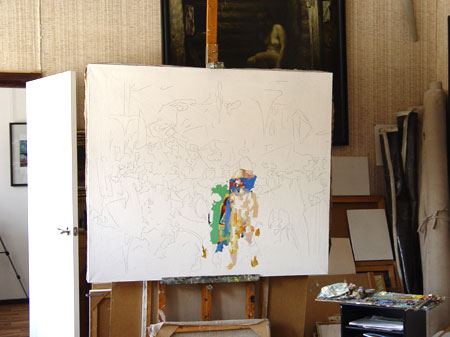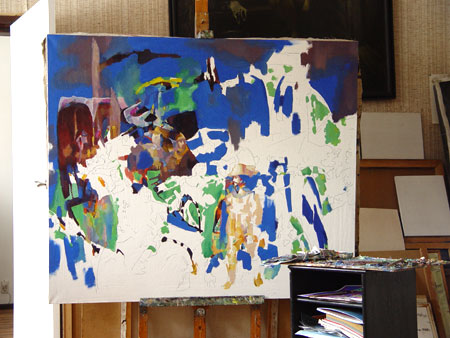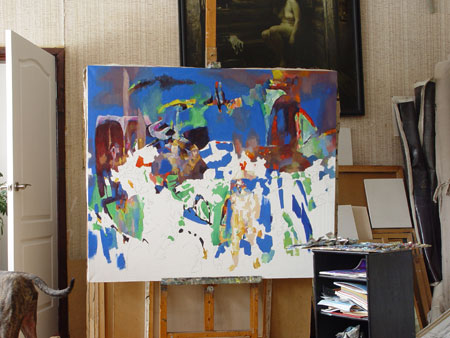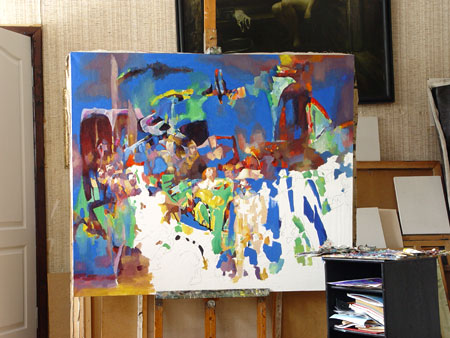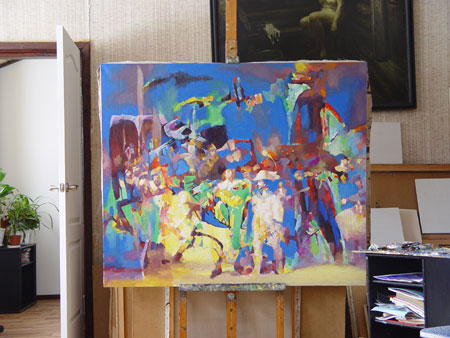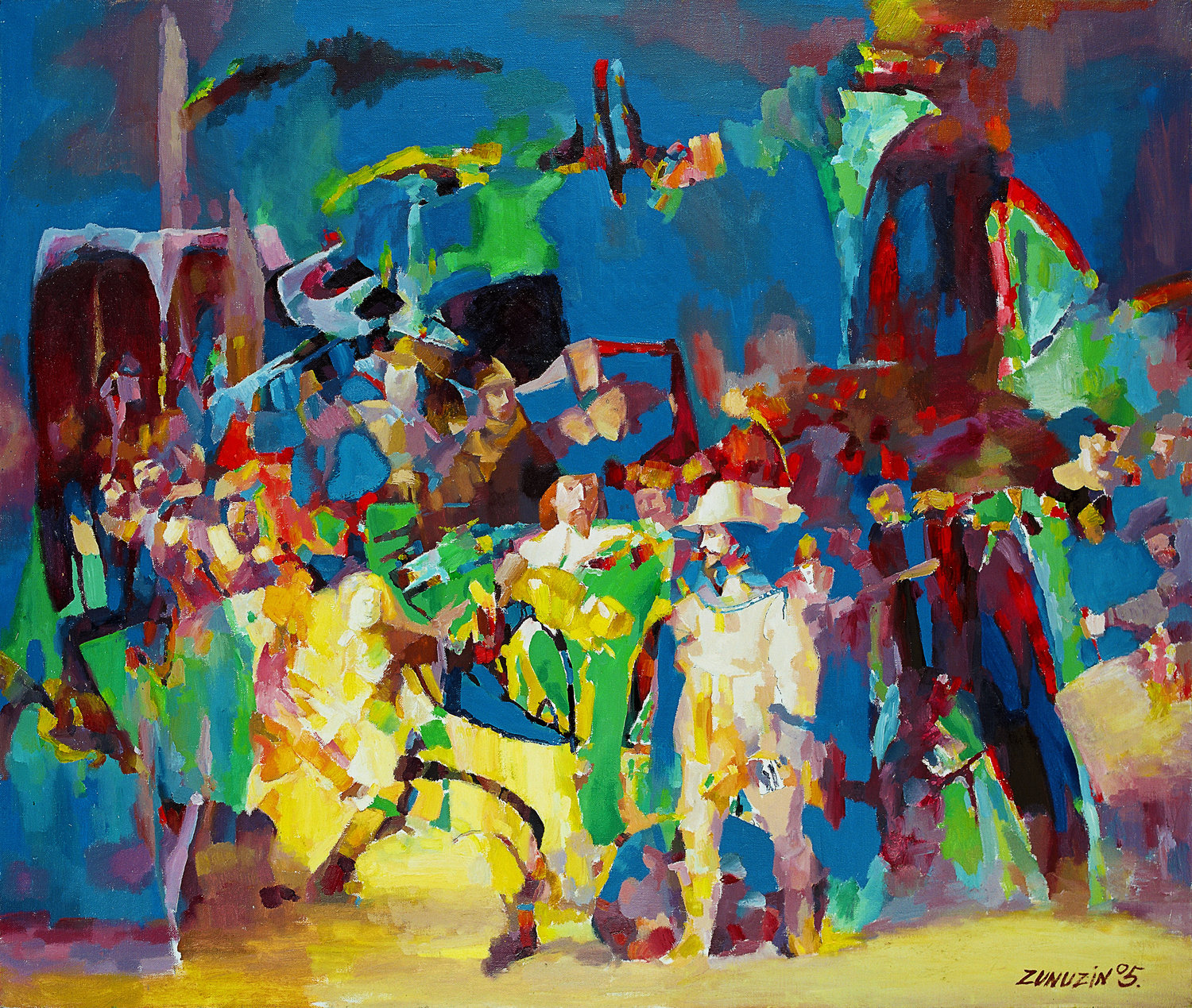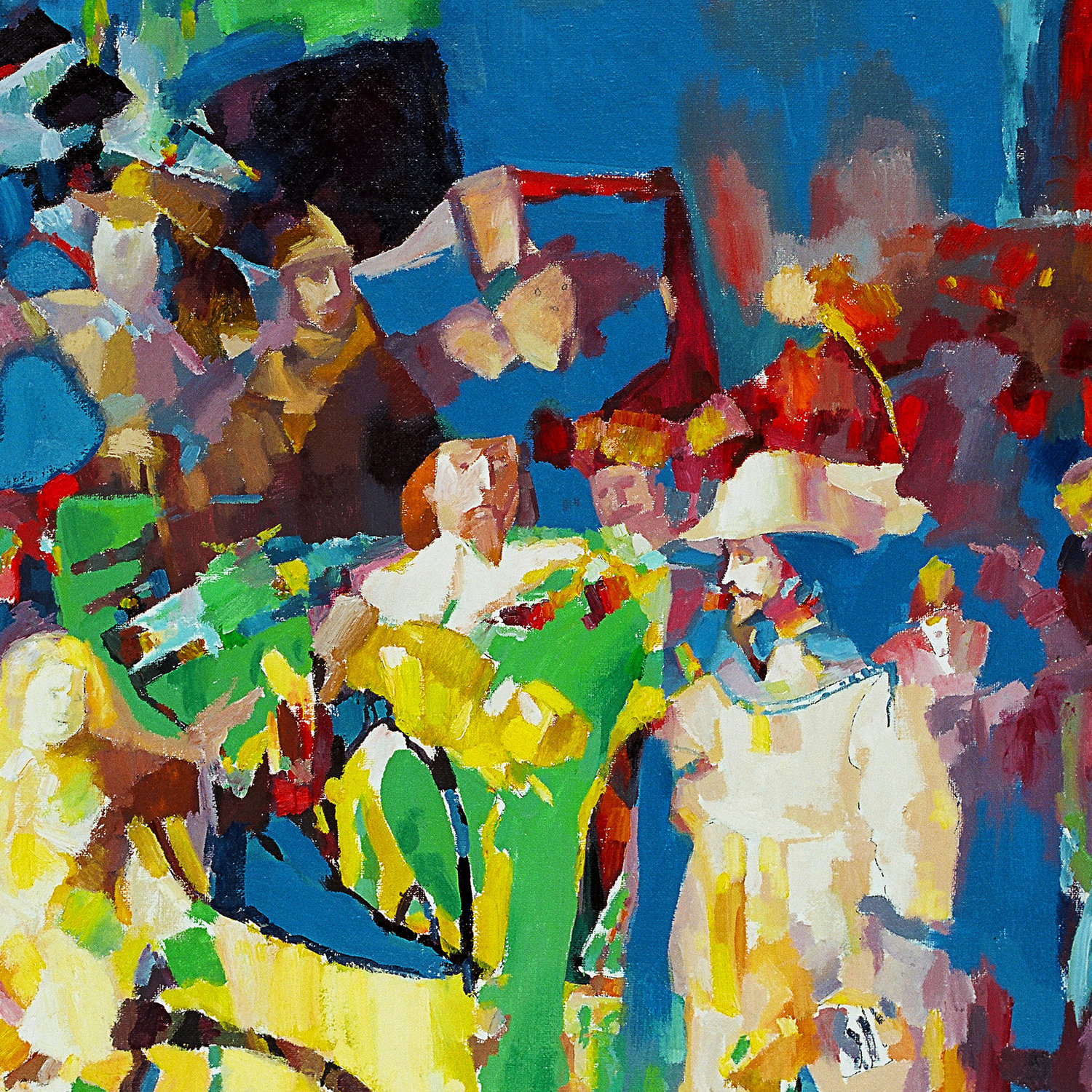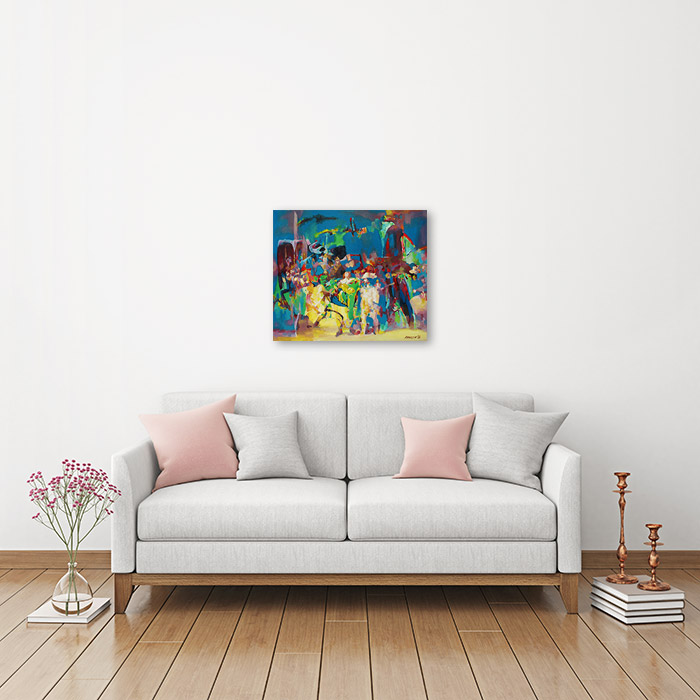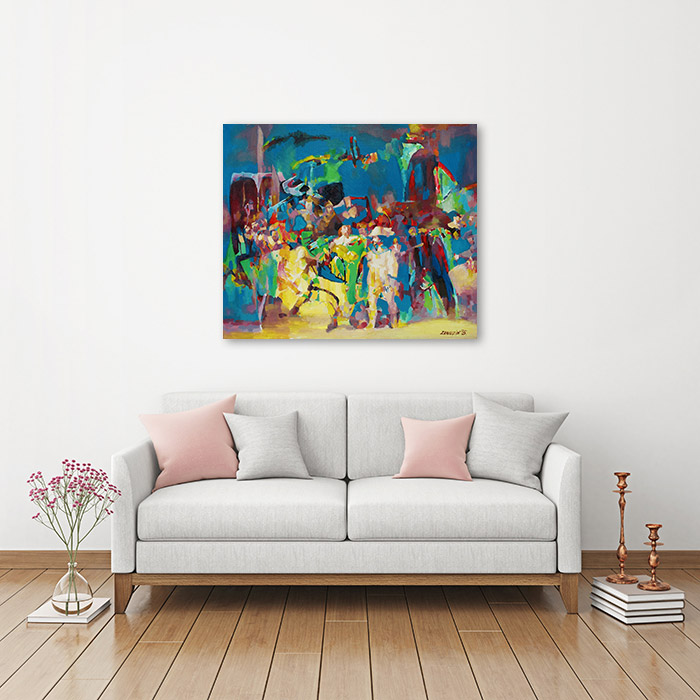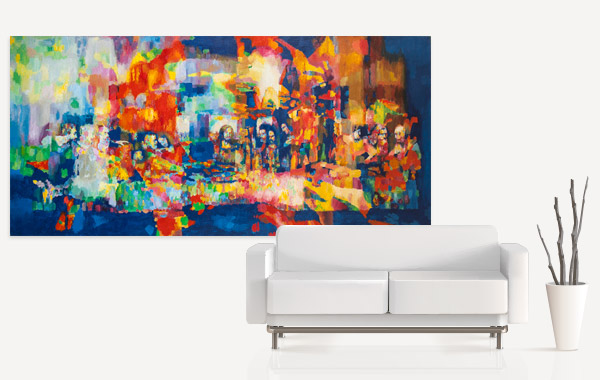The Night Watch (Rembrandt van Rijn Improvisation)
Print information
- Artwork printed by EPSON Stylus Pro 7880 (Epson Ultra Chrome K3 Vivid Magenta) on canvas.
- Limited edition prints of 100. Each artwork will be individually printed, signed, dated and numbered by the artist Vladimir Zunuzin.
Payment and delivery
- Payments by Paypal or 2Checkout.
- Free worldwide shipping with tracking. Will usually ship within 3-5 business days.
- Year created: 2005
- Medium: oil on canvas
- Dimensions (cm): 120x142
This painting reimagines Rembrandt’s The Night Watch through a bold, abstract lens, where figures and movements dissolve into vibrant planes of color. The composition retains a sense of collective energy, as fragmented bodies and gestures emerge from a field of reds, greens, yellows, and blues, giving the impression of a scene caught in motion.
The figures, though only partially defined, evoke a sense of camaraderie and purpose. The interplay of light and shadow is replaced here by the dynamism of bright pigments, creating tension between form and abstraction. Faces, limbs, and costumes appear only fleetingly, as if memory and imagination are reconstructing the original.
The result is both homage and transformation—an exploration of history through modern abstraction. By breaking down the iconic painting into fractured shapes and colors, the work reflects how collective memory itself is fluid, refracted, and reinterpreted over time. It captures not the literal event, but the pulse and spirit it continues to inspire.
Painting process in details
